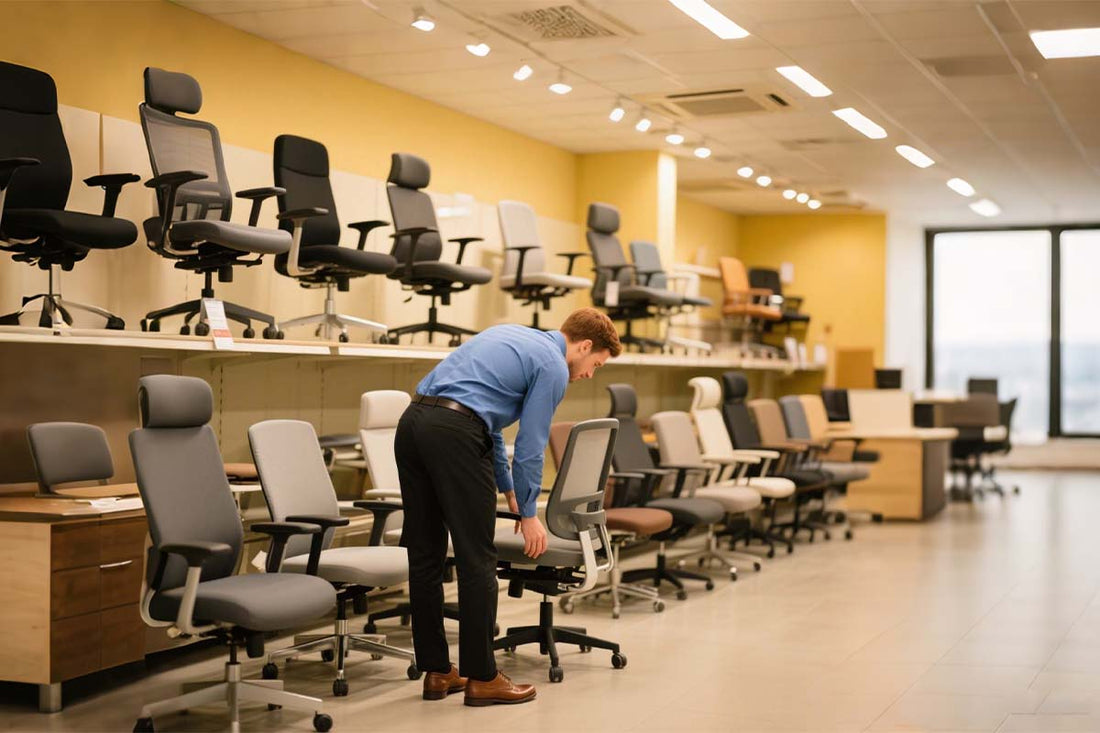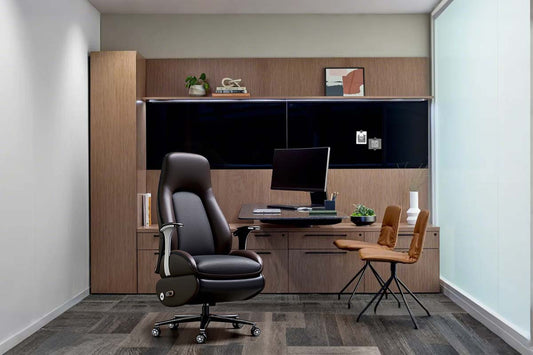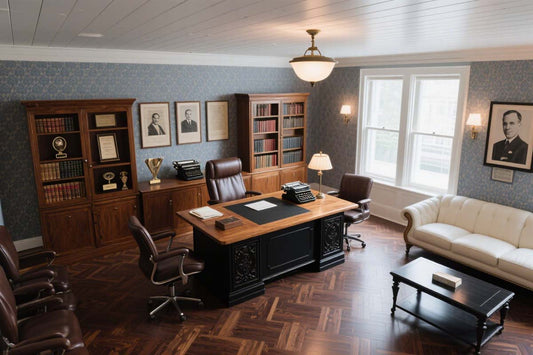
Which Is More Comfortable for Long Hours: Executive or Regular Office Chairs?
Share
Choosing the right office chair is about more than just comfort—it’s an investment in your productivity and long-term health. In today’s work-from-anywhere world, understanding how to properly adjust your chair is critical to prevent strain and boost efficiency. This expert-backed guide compares luxury executive office chairs with basic task chairs and walks you through every major adjustment: from reclining tension to ideal angles, height alignment, and troubleshooting common issues.

What Makes Executive Office Chairs Worth It?
Unlike basic chairs that offer limited adjustability, executive office chairs are built for support, luxury, and customization. They’re designed with ergonomic precision, often used by executives, managers, and professionals who spend 8+ hours a day seated. The key advantages include:
- Multi-angle reclining with adjustable tension
- Built-in lumbar support and cushioned headrests
- Premium materials like genuine leather and memory foam
- Optional features like footrests, heating, and massage
- Greater width and padding for long-term use

How to Adjust Reclining Tension on Your Office Chair
The recline tension knob, usually found beneath the seat, controls how easily your chair leans back. Here’s how to get it just right:
- Locate the tension knob under the seat base.
- Turn clockwise to increase resistance—ideal for taller or heavier users.
- Turn counterclockwise to decrease resistance—for a softer recline.
- Test and fine-tune: Sit, lean back gently, and adjust until it feels controlled but comfortable.
Pro tip: Some luxury office chairs offer synchronized tilt mechanisms, which automatically adjust tension based on your body weight.

Best Recline Angles for Work, Rest, and Focus
Your chair’s angle should reflect what you’re doing—not all reclines are created equal. Here's how to set yours for maximum ergonomic support:
| Activity | Recommended Angle | Why It Works |
|---|---|---|
| Typing, spreadsheets | 90°–100° | Promotes upright spine and full focus |
| Reading, writing | 105°–115° | Reduces neck pressure, perfect for deep work |
| Video calls, light meetings | 110°–120° | Balanced relaxation without dozing off |
| Power naps, breaks | 120°–135° | Relieves spinal compression—pair with footrest |
| Casual reading or reflection | 135°–150° | Great for creative thinking or leisure breaks |

What Happens When You Use the Wrong Recline Angle?
Improper chair angle is more than uncomfortable—it’s damaging. Common risks of incorrect posture include:
- Lower back pain and disc compression from slouching or unsupported sitting
- Neck strain ("tech neck") from leaning too far forward
- Poor blood circulation from bent knees or dangling legs
- Fatigue from muscles overcompensating for lack of lumbar support
The solution? An ergonomic chair for back pain with dynamic tilt and a responsive backrest keeps your spine in its natural "S" curve throughout the day.
Chair Height vs. Body Height: What’s the Ideal Match?
Getting the right chair height isn’t just about your legs—it also affects shoulder and neck alignment. Here's what to look for:
- Under 5’4” (162 cm): Mid-back chairs or adjustable headrests
- 5’4” to 5’11” (162–180 cm): Most executive office chairs work with minor seat height tweaks
- 6’0” and above (183 cm+): Tall-back chairs with extendable headrests and deep seats
Ensure the backrest supports your shoulder blades and lumbar, and that your feet stay flat on the floor or footrest.

What If the Office Desk Chairs Backrest Gets Stuck?
A stuck backrest usually means:
- The recline lock is still engaged
- The internal spring mechanism is jammed
- Debris or friction is interfering with movement
To fix it:
- Ensure the recline lever is fully disengaged
- Gently rock the chair while pulling the lever
- Apply silicone-based lubricant to joints or moving parts
- Contact support if the issue persists

Why Is My Office Chair Squeaking After Adjustment?
Noisy chairs often result from mechanical wear or loose parts. Causes include:
- Loose screws or bolts
- Dry joints in the tilt mechanism
- Worn-out gas lift cylinders
- Friction between seat base materials
Solutions:
- Tighten all visible bolts
- Apply lubricant to moving joints
- Add an office chair cushion if squeaks come from the seat pad
How Backrest Angle Affects Comfort: Expert Video Guide for Office Chairs
Finding the right backrest angle isn’t one-size-fits-all. It depends on your posture, your activity, and the type of chair you’re using—especially if you're working from home or in a hybrid office environment.
As explained in this short expert video, adjusting your chair correctly based on your task can significantly reduce fatigue and improve posture:
If your chair allows for angle adjustment, take a moment to try different tilt settings for various tasks—from upright for typing to reclined for reading. Luxury office chairs typically offer multi-angle locking and tilt resistance settings that make this easier and more precise.
Final Thoughts: Executive Office Chair Benefits for Long Hours
Whether you're a remote worker, executive, or creative professional, investing in a properly adjustable office chair is essential. Use this guide to:
- Customize your chair’s recline and resistance
- Match the right angle to your task
- Resolve squeaks, stiffness, or stuck parts
- Prevent long-term pain with better posture support
In short, sitting smarter helps you work better, feel better, and avoid back pain, even after long hours at your desk.
If you’re considering upgrading to a chair that truly supports your back and productivity, make sure to explore options with reclining features, lumbar support, and genuine leather comfort. Your body will thank you.



